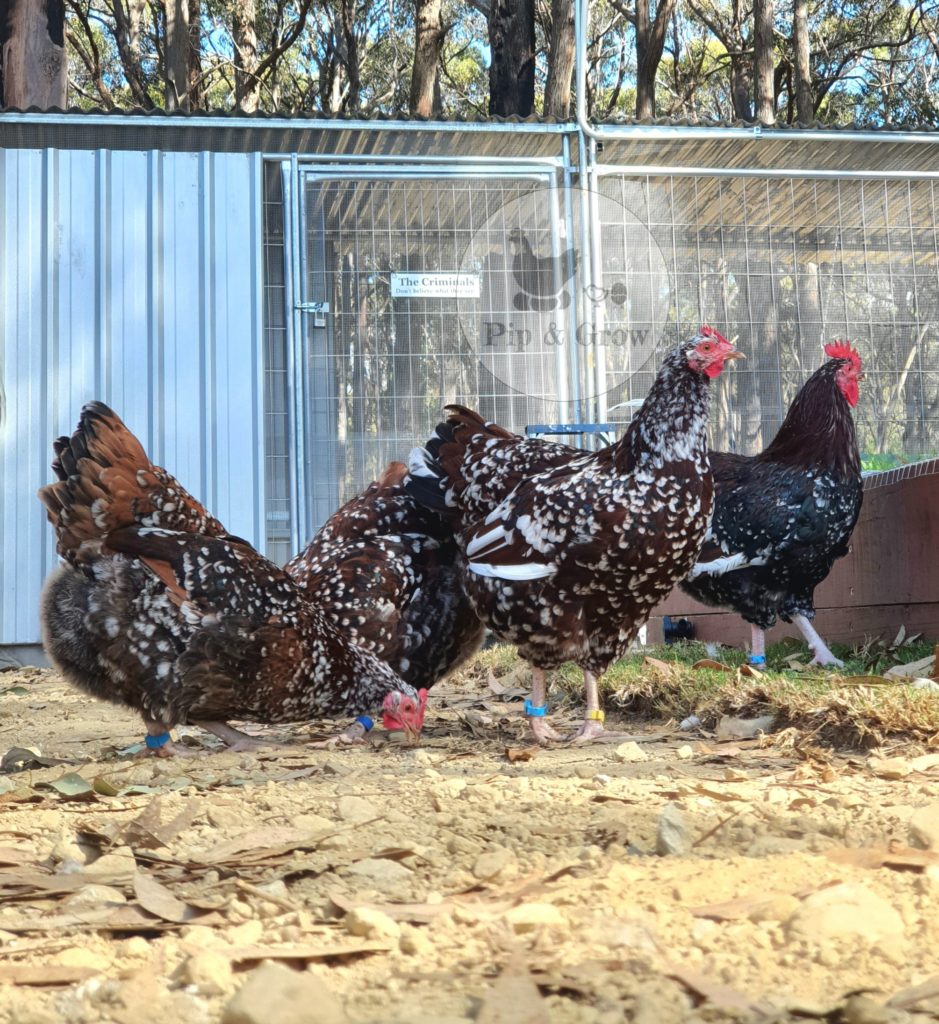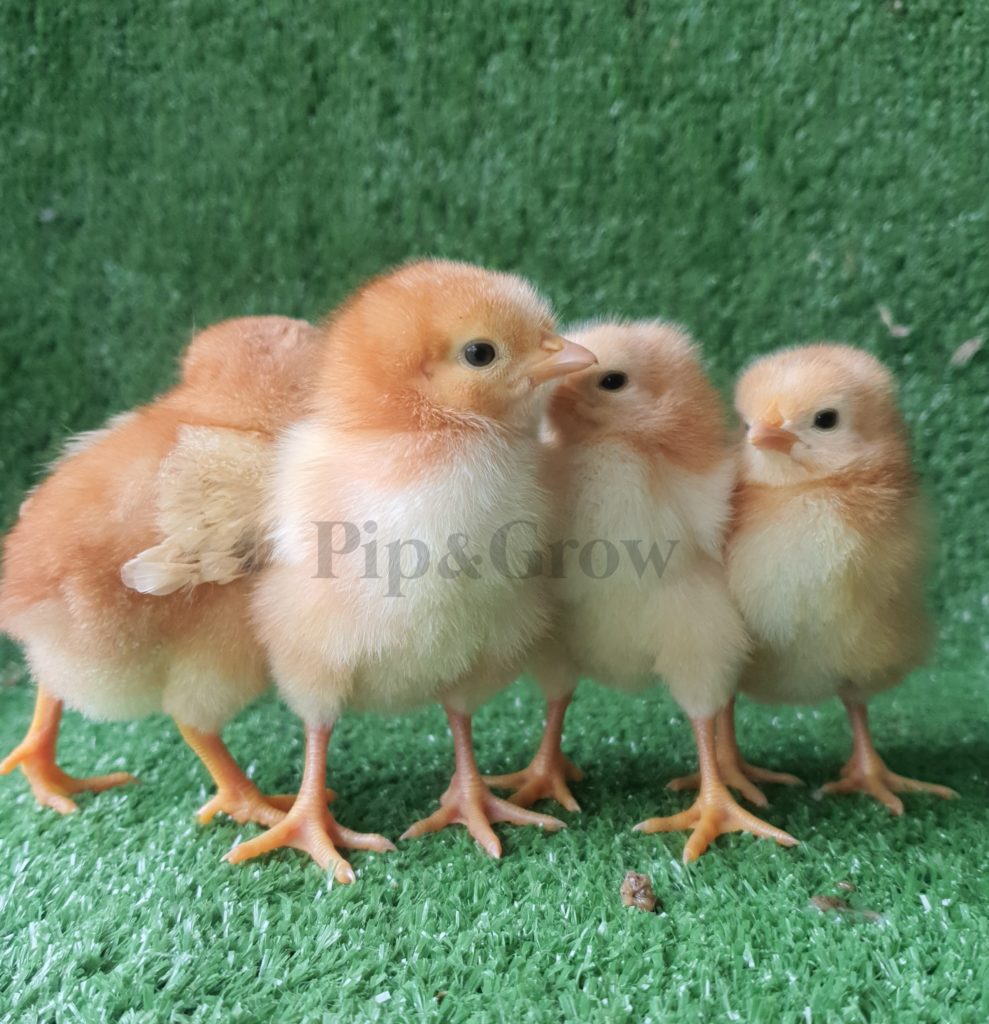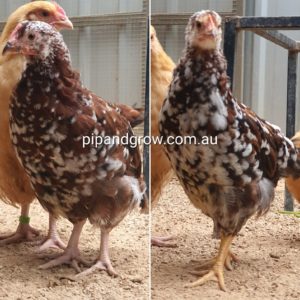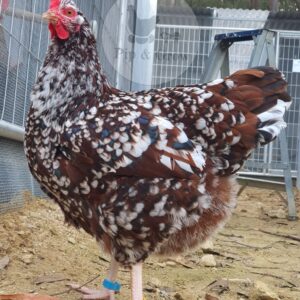Sussex
Standard, Speckled

- Originated from Sussex, England
- Mature weight around 3.5-5(rooster)kg
- Fast to moderate maturing – first egg around 7 months
- Medium – large light brown coloured eggs 200 – 250 eggs per year
- Broodiness – Medium
- Maintenance – Low
Speckled Sussex is a heritage breed known for its striking appearance, friendly cheeky temperament, and reliable egg production. Originating from Sussex, England, this breed has been cherished by poultry enthusiasts for centuries.
Speckled Sussex are medium-sized birds with a sturdy build and attractive plumage. They have a distinct pattern of black or dark brown speckles against a rich mahogany or red background, giving them a vibrant and eye-catching appearance.They are excellent egg layers, producing large tinted eggs consistently throughout the season. Additionally, they have a well-developed carcass, making them suitable for meat production as well. One of the standout characteristics of Speckled Sussex is their friendly and docile nature. They are known for being calm and easy to handle, making them suitable for backyard flocks and family settings. They are also active foragers and enjoy exploring their environment, making them well-suited for free-range environments. Our Speckled Sussex breeding program comprises selected breeders sourced from diverse bloodlines across Australia. We avoid breeding from birds with split chests and white earlobes, which are common issues we notice among speckled sussex breed in Australia Please see Sussex – Open Poultry Standard Australia for more info and breed standards.Sussux Chicks

Speckled Sussex chicks hatch with a buff-based coloration, with some displaying markings while others appear solid. These markings are a result of genetic variation. Chicks carrying the partridge color base genetic may exhibit chipmunk lines on the back or freckles on the head, while those with a wheaten base genetic typically lack any markings. These markings are temporary and disappear as the chicks grow and moult.
Speckled Sussex Genetic Throwback 2024/25 season

Our current season’s breeding stock originates from three distinct bloodlines, all exhibiting correct “White” leg coloration. However, we’ve excluded one bird from our breeding program due to the presence of “Yellow” legs, a result of inheriting two copies of recessive genes. There’s a possibility that other birds from the same lineage may carry a single copy of this trait, which remains unexpressed. All our birds have been marked since hatching, allowing us to identify which lineage potentially carries this trait. We will closely monitor our offspring this season and address any issues if necessary. While this may or may not occur and may not significantly impact backyard keeping, we’re providing this note ahead of the season for experienced breeders to be aware.
More info “What is genetic throwback?”
Updated 02/12/2024:
We have identified two of our best-marked hens for the 2024/25 season, along with a rooster, as carriers of the recessive yellow leg gene. This trait has been noted in some of this season’s offspring following the introduction of our new rooster in early November. We believe some of our customers who purchased eggs or chicks from us this season may have noticed it as well.
Currently, we are closely monitoring our growers to determine the best course of action for the 2025/26 season. While we could remove the carrier line entirely, these birds exhibit desirable size, color, and markings when the yellow leg gene is not expressed. Alternatively, we may incorporate a rooster from a new line to reduce the prevalence of this recessive gene. Our decision will be based on how the growers develop over the coming months.
Related post Sussex Sexing Tips
